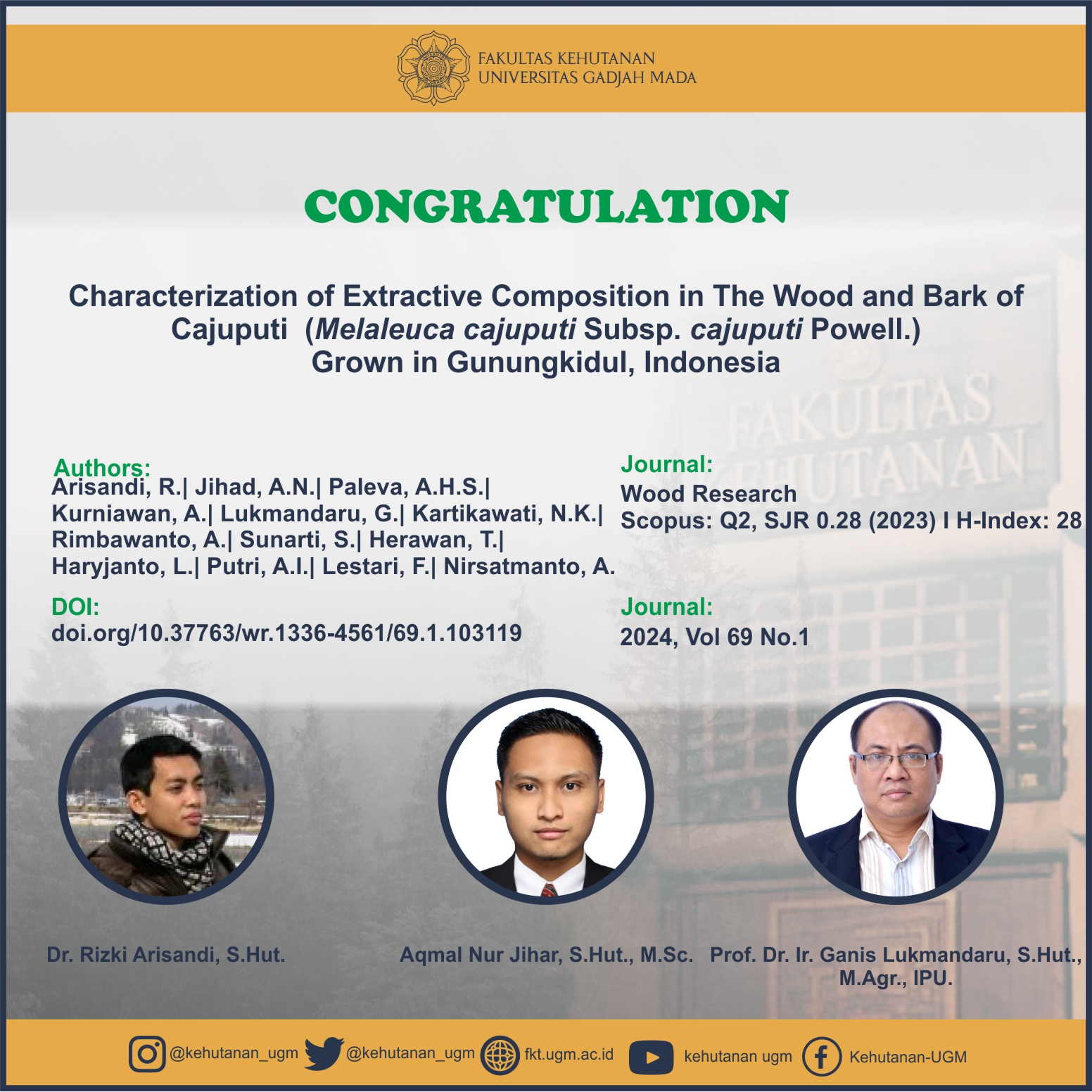
Abstract
The aim of this study was to analyze the extractive composition of the wood and bark of cajuput (M. cajuputi subsp. cajuputi) to consider the end use material according to the characteristics of the its extractives. Results showed that the extractives properties of M. cajuputi, i.e. the contents of n-hexane, methanol, hot water extractives and total phenolic content (TPC), flavonoid content (TFC) and total polysaccharides (TSP) were 0.84 to 1.05%, 1.00 to 1.03% and 1.43 to 1.46%, and 19.2 to 38.7 and 23.2 to 27.3 mg GAE/g dried extract, 11.8 to 16.0 and 7.55 to 14.0 mg QE/g dried extract and 79.3 to 102.8 and 148.8 to 165.9 mg
Glu/g dried extract, respectively. Bark had higher extractive levels than wood. In addition, TPC and TSP in the bark were greater than in the wood parts, whereas the reverse trend was found in
TFC. The relatively high contents of TPC and TFC in the wood and bark suggest that their potential antioxidant properties. Based on the GC-MS analysis, the high content of
sterols-steroids (31.4%) and triterpenoids (21.9%) in the bark part will have potential in the field of pharmacology.
SDGs:
1. SDGs 3:Good Health and Well-being
2. SDGs 9:Industry, Innovation, and Infrastructure
3. SDGs 12:Responsible Consumption and Production
4. SDGs 13:Climate Action
5. SDGs 15:Life on Land
Link Dokumen:
Download
